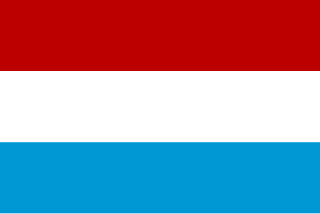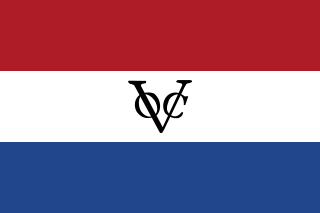Related Research Articles

The United Provinces of the Netherlands, officially the Republic of the Seven United Netherlands, and commonly referred to in historiography as the Dutch Republic, was a confederation that existed from 1579 until the Batavian Revolution in 1795. It was a predecessor state of the present-day Netherlands. The republic was established after seven Dutch provinces in the Spanish Netherlands revolted against Spanish rule, forming a mutual alliance against Spain in 1579 and declaring their independence in 1581. It comprised Groningen, Frisia, Overijssel, Guelders, Utrecht, Holland and Zeeland.

John IV, nicknamed John the Restorer, was the King of Portugal whose reign, lasting from 1640 until his death, began the Portuguese restoration of independence from Habsburg Spanish rule. His accession established the House of Braganza on the Portuguese throne, and marked the end of the 60-year-old Iberian Union by which Portugal and Spain shared the same monarch.

The Eighty Years' War or Dutch Revolt (c.1566/1568–1648) was an armed conflict in the Habsburg Netherlands between disparate groups of rebels and the Spanish government. The causes of the war included the Reformation, centralisation, taxation, and the rights and privileges of the nobility and cities.

The Asiento de Negros was a monopoly contract between the Spanish Crown and various merchants for the right to provide African slaves to colonies in the Spanish Americas. The Spanish Empire rarely engaged in the trans-Atlantic slave trade directly from Africa itself, choosing instead to contract out the importation to foreign merchants from nations more prominent in that part of the world; typically Portuguese and Genoese, but later the Dutch, French, and British. The Asiento did not concern French or British Caribbean but Spanish America.

The Dutch Empire or the Dutch colonial empire comprised the overseas territories and trading posts controlled and administered by Dutch chartered companies—mainly the Dutch East India Company and the Dutch West India Company—and subsequently by the Dutch Republic (1581–1795), and by the modern Kingdom of the Netherlands after 1815. It was initially a trade-based system which derived most of its influence from merchant enterprise and from Dutch control of international maritime shipping routes through strategically placed outposts, rather than from expansive territorial ventures. The Dutch were among the earliest empire-builders of Europe, following Spain and Portugal and one of the wealthiest nations of that time.

The Iberian Union was the dynastic union of the Crowns of Castile and Aragon and the Kingdom of Portugal that existed between 1580 and 1640 and brought the entire Iberian Peninsula, as well as Portuguese and Spanish overseas possessions, under the Spanish Habsburg monarchs Philip II, Philip III, and Philip IV. The union began after the Portuguese crisis of succession and the ensuing War of the Portuguese Succession, and lasted until the Portuguese Restoration War, during which the House of Braganza was established as Portugal's new ruling dynasty with the acclamation of John IV as the new King of Portugal. As a personal union, the Kingdoms of Portugal and Spain remained independent states, sharing only a single monarch.

The Peace of Münster was a treaty between the Lords States General of the Seven United Netherlands and the Spanish Crown, the terms of which were agreed on 30 January 1648. The treaty, parallelly negotiated to but not part of the Peace of Westphalia, is a key event in Dutch history, marking the formal recognition of the independent Dutch Republic and the end of the Thirty Years' War and the Eighty Years' War.

The Philippine dynasty, also known as the House of Habsburg in Portugal, was the third royal house of Portugal. It was named after the three Habsburg Spanish kings, all named Philip, who ruled Portugal between 1581 and 1640 under the Iberian Union, a dynastic union of the crowns of Spain and Portugal. The dynasty's kings were Philip I, Philip II and Philip III.

The Twelve Years' Truce was a ceasefire during the Eighty Years' War between Spain and the Dutch Republic, agreed in Antwerp on 9 April 1609 and ended on 9 April 1621. While European powers like France began treating the Republic as a sovereign nation, the Spanish viewed it as a temporary measure forced on them by financial exhaustion and domestic issues and did not formally recognise Dutch independence until the Treaty of Westphalia in 1648. The Truce allowed Philip III of Spain to focus his resources elsewhere, while Archdukes Albert and Isabella used it to consolidate Habsburg rule and implement the Counter-Reformation in the Southern Netherlands.

From the restoration of the House of Braganza in 1640 until the end of the reign of the Marquis of Pombal in 1777, the Kingdom of Portugal was in a period of transition. Having been near its height at the start of the Iberian Union, the Portuguese Empire continued to enjoy the widespread influence in the world during this period that had characterized the period of the Discoveries. By the end of this period, however, the fortunes of Portugal and its empire had declined, culminating with the Távora affair, the catastrophic 1755 Lisbon earthquake, and the accession of Maria I, the first ruling Queen of Portugal.

Dutch Brazil, also known as New Holland, was a colony of the Dutch Republic in the northeastern portion of modern-day Brazil, controlled from 1630 to 1654 during Dutch colonization of the Americas. The main cities of the colony were the capital Mauritsstad, Frederikstadt, Nieuw Amsterdam (Natal), Saint Louis, São Cristóvão, Fort Schoonenborch (Fortaleza), Sirinhaém, and Olinda.

The Dutch–Portuguese War was a global armed conflict involving Dutch forces, in the form of the Dutch East India Company and the Dutch West India Company, as well as their allies against the Iberian Union, and after 1640, the Portuguese Empire. Beginning in 1602, the conflict primarily involved the Dutch companies invading Portuguese colonies in the Americas, Africa, and the East Indies. The war can be thought of as an extension of the Eighty Years' War being fought in Europe at the time between Spain and the Netherlands, as Portugal was in a dynastic union with the Spanish Crown after the War of the Portuguese Succession, for most of the conflict. However, the conflict had little to do with the war in Europe and served mainly as a way for the Dutch to gain an overseas empire and control trade at the cost of the Portuguese. English forces also assisted the Dutch at certain points in the war. Because of the commodity at the center of the conflict, this war would be nicknamed the Spice War.

The Portuguese Restoration War was the war between Portugal and Spain that began with the Portuguese revolution of 1640 and ended with the Treaty of Lisbon in 1668, bringing a formal end to the Iberian Union. The period from 1640 to 1668 was marked by periodic skirmishes between Portugal and Spain, as well as short episodes of more serious warfare, much of it occasioned by Spanish and Portuguese entanglements with non-Iberian powers. Spain was involved in the Thirty Years' War until 1648 and the Franco-Spanish War until 1659, while Portugal was involved in the Dutch–Portuguese War until 1663.
The Treaty of Lisbon of 1668 was a peace treaty between Portugal and Spain that was concluded at Lisbon on 13 February 1668 with the mediation of England in which Spain recognised the sovereignty of Portugal's new ruling dynasty, the House of Braganza.
The Treaty of The Hague may refer to:
The Treaty of The Hague was signed on 6 August 1661 between representatives of the Dutch Empire and the Portuguese Empire. Based on the terms of the treaty, the Dutch Republic recognized Portuguese imperial sovereignty over New Holland in exchange for an indemnity of 4 million reis, conversion from 2 million caroli guilders, over the span of 16 years.

Dutch Ceylon was a governorate established in present-day Sri Lanka by the Dutch East India Company. Although the Dutch managed to capture most of the coastal areas in Sri Lanka, they were never able to control the Kandyan Kingdom located in the interior of the island. Dutch Ceylon existed from 1640 until 1796.

The Dutch Empire is a term comprising different territories that were controlled by the Netherlands from the 17th to 20th centuries. They settled outside Europe with skills in trade and transport. In the late 16th century, the Netherlands reclaimed their lead at sea, and by the second half of the 17th century, dominated it. This hundred-year period is called the Dutch Golden Age. The Dutch built their empire with corporate colonialism by establishing the Dutch East India Company (VOC) and the Dutch West India Company (GWC), following Britain's footsteps, which led to war between both empires. After the French Revolutionary Wars, the Netherlands lost most of its power to the British after the French armies invaded the Netherlands and parts of the Dutch colonies. Hence, Dutch leaders had to defend their colonies and homeland. Between 1795 and 1814 the French restored the VOC in Indonesia and Suriname which remained under Dutch control.

The years 1621–1648 constituted the final phase of in the Eighty Years' War between the Spanish Empire and the emerging Dutch Republic. It began when the Twelve Years' Truce (1609–1621) expired, and concluded with the signing and ratification of the Peace of Münster on 30 January and 15 May 1648, respectively.

Relations between Brazil and the Netherlands are the diplomatic, historical, cultural and economic ties established between both countries. Brazil has an embassy in The Hague and a consulate in Amsterdam, and the Netherlands is represented by an embassy in Brasília and consulates in Belém, Belo Horizonte, Curitiba, Fortaleza, Manaus, Natal, Porto Alegre, Recife, Salvador, Rio de Janeiro, Santos, São Paulo and Vila Velha.